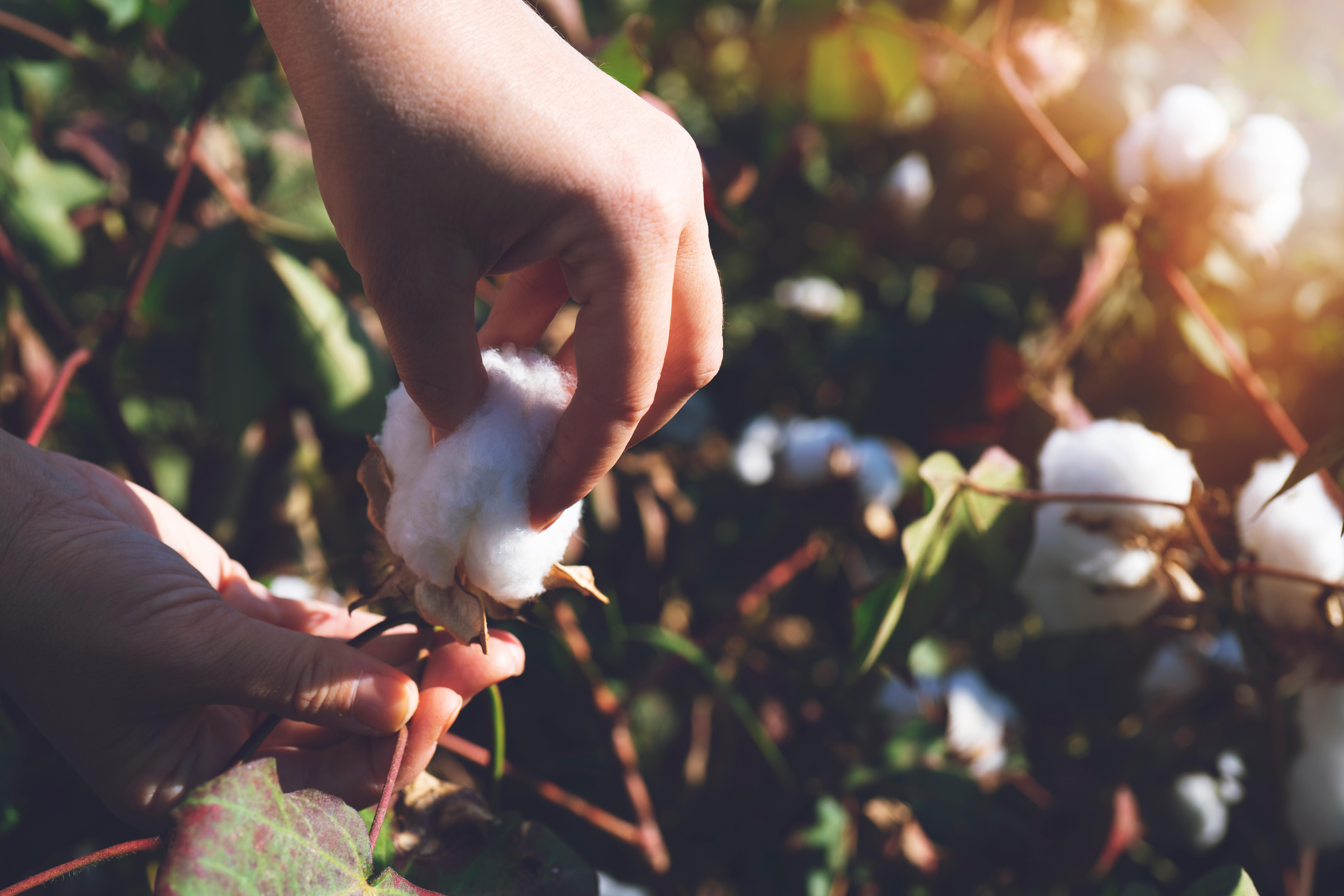Lower Impact Materials
Fashion is far more than just the final product. To truly tackle the industry’s impact, we need to look at every element of production. And that means starting at the very beginning, looking at the raw materials that go on to become garments and ensuring that their impact is as low as possible.
Upstream supply chain activities such as production, preparation and processing of materials represent the fashion and textile industry’s greatest impact in terms of emissions.
A 2022 report from Textile Exchange confirms that drastic changes need to be made along the supply chain if the industry hopes to reduce emissions and keep in line with the 1.5°C warming limit goal.
Based on a mapping of opportunities for collective actions to enable progress towards a net-zero future, we have decided to focus our efforts on actions that will help transition the industry to the uptake of more sustainable material alternatives.
Finding collective system solutions to adopt low impact materials, going faster together
Our ambition is to scale the availability of increased Lower impact materials* on the market across the value chain, ensuring that 25% of members’ key raw materials are lower impact materials by 2025.
Unlock Cotton
A significant number of greenhouse gas (GHG) emissions in the textile value chain come from the ‘Tier 4’ raw material stage. The Unlock Programme is a new system that creates incentives for cotton farmers to apply low climate impact and regenerative farming practices. It aims to lessen the barriers in moving from conventional to better practices, including increased up-front costs, lack of immediate financial incentives, or changes in yield – and by addressing these barriers, decarbonise production and increase availability of low climate impact materials.
Unlock will also measure other key metrics such as farmer livelihoods, biodiversity, soil health and water as part of the pilot, and is designed to be compatible with almost any existing initiative in order to provide measurement of outcomes and additional farmer support.
Participating members in the pilot are given the opportunity to claim Scope 3 GHG benefits for cotton in a new way, through an independently validated programme using GHG impact quantification and payments to decarbonise and make claims within a company’s own value chain.


Geographies: US and India in pilot phase, with plans to scale globally
Timeline: The pilot phase will be completed and the full scaling of the programme begin in summer 2024
Partners: Project developed in collaboration with climate technical consultancy firm 2050 and some of the world’s leading technical advisors, data partners, and cotton programmes
Learn more here.


*lower impact material is defined by the criteria set out in the Textile Exchange definition of a preferred fiber or material or the Fashion Industry Charter for Climate Action targets related to raw materials which includes preferred and low climate impact